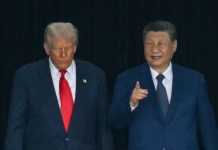2018 witnessed an explosive growth of ‘suicide terrorism’ in Kashmir with youngsters as young as nine picking up the guns, teenagers pelting stones and masses running to encounter sites to ‘save’ the militants.
OIC Strongly Condemns Indian Atrocities and Civilian Killings in Kashmir
American Psychologist Geoffrey Mumford explains that in every war, there are stories of self-sacrifice involving ‘suicide’ missions in which death was a near certainty because of the risk associated with the battlefield circumstances. He said in some wars it was the goal of the mission, which was purposely coupled to homicide as a vehicle to inflict massive harm to the enemy.
Mumford gives an example of Kamikaze pilots in World War II who inflicted some 15,000 casualties, but whether the pilots were viewed as heroes or villains depended very much on whose side you were on. “But over the last twenty plus years, we have born witness to a resurgence of suicide coupled to homicide as a terrorist tactic perpetrated by such groups as the Tamil Black Tigers, the Popular Front for Liberation of Palestine, Chechen ‘Black Widows’ and Al Qaeda.”
Robert A.Pape, from the University of Chicago, describes ‘suicide terrorism’ as a response to foreign occupation and nationalism is the taproot of suicide terrorism. “Many international disputes – the presence of American and French forces in Lebanon, the Israeli occupation of the West Bank and Gaza, the status of the Kurdish region of Turkey, the Russian occupation of Chechnya, the Indian control of Kashmir, and the presence of US forces in Iraq and in the Arabian Peninsula.”
Pape said ongoing campaigns by definition are those where terrorists have not achieved their objectives. “Otherwise the terrorists would either change their objectives or lay down their arms and this is very much evident in terrorism’s inability to force Russia out of Chechnya, to coerce India to abandon Kashmir or to expel American forces from the Persian Gulf.”
Please Stay Away From Encounter Sites: Jammu & Kashmir Governor to People
Experts say that suicide terrorism is a product of domestic competition among multiple organizations for popular support from their community. Pape says the core phenomenon to be explained is the existence of protracted suicide terrorist campaigns. Suicide terrorism depends for its existence on three components, the strategic, the social and the individual.
“The strategic logic is aimed at political coercion. It occurs in clusters as part of the larger campaign by an organized group to achieve a specific political goal.” Suicide terrorist campaigns are primarily nationalists, not religious, nor are they particularly Islamic. Secondly, the social logic, suicide terrorist groups are neither primarily criminal gangs dedicated to enriching their top leaders nor religious cults isolated from the rest of their society.
Rather, they command social support within the national communities from which they recruit because they are seen as pursuing legitimate nationalist goals. Pape explains it well and this can be said the same for Kashmir, “suicide terrorism is most likely when the occupying power’s religion differs from the religion of the occupied, for three reasons: a conflict across a religious divide increases the fear that the enemy will seek to transform the occupied society; makes demonization and therefore killing of enemy civilians easier; and makes it easier to use one’s religion to relabel suicides that would otherwise be taboo as martyrdom instead.”
Now coming to the last component, ‘individual’ is termed as egoistic suicide whereby personal psychological trauma leads to an individual to kill himself in order to escape a painful existence.
This is the same for Kashmir, for Kashmiri identity. Many have sacrificed their lives for their Valley’s good. Kashmir’s explosive growth of suicide terrorism can only be best understood as an extreme strategy for national liberation against democracy with troops that pose an imminent threat to control the territory the terrorists view as their homeland.




